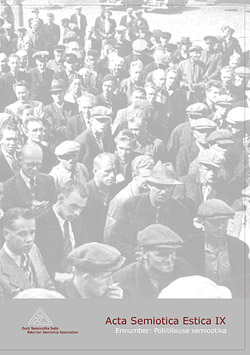Teleoloogiline ajaloonarratiiv kui poliitilise antagonismi konstrueerimise strateegia Eesti taasiseseisvumise käsitluste näitel
Teleological historical narrative as a strategy for constructing political antagonism: the example of the narrative of Estonia’s regaining of independ
Author(s): Peeter Selg, Rein RuutsooSubject(s): Cultural Essay, Political Essay, Societal Essay
Published by: Eesti Semiootika Selts
Keywords: semiotic theory of hegemony; history-writing; narrativized history; teleological narrative; antagonism; Estonia’s regaining of independence
Summary/Abstract: The paper analyses the history-writing that deals with Estonia’s regaining of independence through the framework of semiotic theory of hegemony. Besides articulating this theory as a framework for political analysis an account is provided for the application of the general categories of semiotic theory of hegemony to history-writing as a specific system of meaning. Hence our recourse to mediating concepts from theories of history and historical memory: emplotment, master narrative, narrative substance, schematic narrative template. In our analysis we concentrate on all the writings of the historians who have been active in Estonia that meet the following criteria: 1) they seek to provide a perspicuous presentation of the dynamics of the whole period; 2) they are wide accounts: a monograph, a longer article or a commented sample of documents concentrating on the subject, or a chapter on the subject in an important general sourcebook on Estonia’s history; 3) the presentation of the subject is not mainly in the form of personal memories, but is framed as expressing an objective, by-stander’s, historian’s position. One of our conclusions is that besides being a professional practice history-writing constitutes also a certain political practice. Through analyzing the texts represented in our sample we chart how through representing Estonia’s transition through teleological narrative a political antagonism is constructed between the „proponents” and „opponents” to Estonia’s independence, and how several important aspects of the process of transition are peripherized and excluded from the narrative representation of Estonia’s regaining of independence.
Journal: Acta Semiotica Estica
- Issue Year: 2012
- Issue No: 9
- Page Range: 109-143
- Page Count: 35
- Language: Estonian

